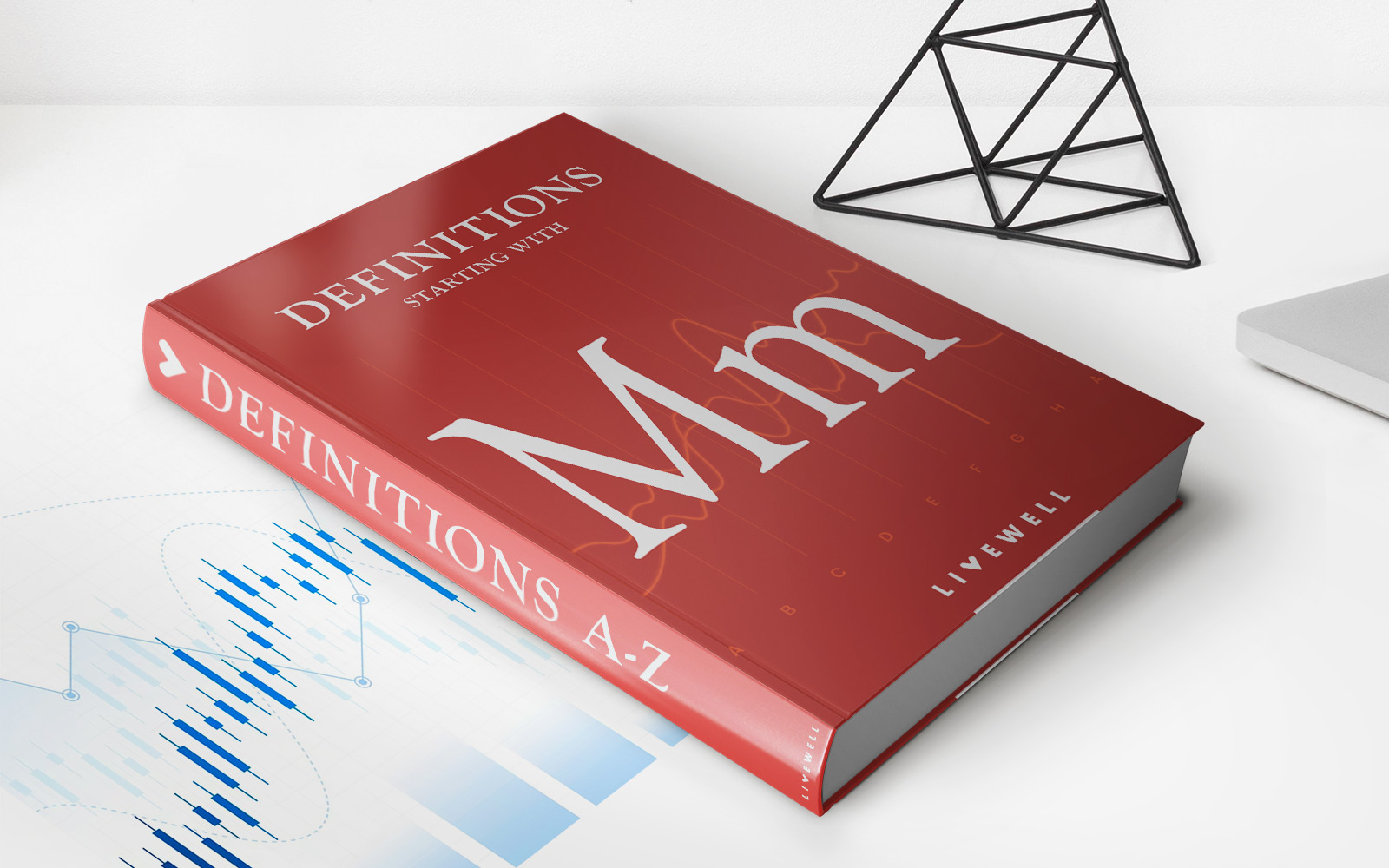

Finance
What Does DR Mean In Accounting
Published: October 8, 2023
Understanding the meaning of "DR" in accounting and its implications for finance. Discover how this term affects financial records and reporting.
(Many of the links in this article redirect to a specific reviewed product. Your purchase of these products through affiliate links helps to generate commission for LiveWell, at no extra cost. Learn more)
Table of Contents
Introduction
Welcome to the world of accounting, where numbers rule the kingdom of commerce. As you venture into the realm of finance, you may come across various acronyms and abbreviations that might leave you scratching your head. One such abbreviation is “DR,” which stands for “debit” in accounting. In this article, we will unravel the meaning and significance of DR in the world of finance.
Accounting serves as the backbone of any organization, enabling businesses to track their financial transactions, analyze their performance, and make informed decisions. To ensure accuracy and consistency, accountants rely on the principles and conventions of double-entry bookkeeping. This system requires every financial transaction to have two entries—an equal and opposite pair represented by debit (DR) and credit (CR). These entries serve as the building blocks of financial statements, such as the balance sheet, income statement, and cash flow statement.
The concept of DR originates from the fundamental accounting equation: Assets = Liabilities + Equity. Debits are used to record increases in assets and expenses or decreases in liabilities and equity. Conversely, credits are used to record decreases in assets and expenses or increases in liabilities and equity. By following this principle, accountants can maintain the equation’s balance and accurately reflect a company’s financial position.
Understanding DR is crucial to grasp the transactions recorded in financial statements and analyze a company’s financial health. As we dive deeper, we will explore the definition of DR, its purpose in accounting, examples of DR transactions, benefits, and limitations of using DR, and ultimately gain a comprehensive understanding of this essential concept in finance.
Definition of DR in Accounting
In the realm of accounting, DR stands for “debit.” Debit is a fundamental concept in double-entry bookkeeping that represents the left side of a financial transaction. It denotes an increase in assets or expenses, or a decrease in liabilities or equity.
When recording a financial transaction, accountants use DR to designate the account to which the amount is being debited. This account can be an asset account, such as cash, accounts receivable, or inventory, or an expense account, such as salaries, utilities, or rent. By debiting an account, the financial value is transferred from another account or recorded as an expense, ultimately affecting the overall balance of the equation.
The ability to correctly interpret DR is crucial in understanding the nature of a transaction. A debit entry typically indicates an increase in resources owned by the company or a decrease in its obligation to external parties. For example, a debit entry may reflect the purchase of inventory with cash, resulting in an increase in the company’s assets (inventory) while reducing its cash balance.
It’s important to note that the use of DR denotes a specific category of transactions in double-entry bookkeeping and should not be confused with debits or withdrawals in personal banking. While both involve the transfer of money, the concept of DR in accounting refers to the recording of financial transactions, while personal banking refers to the reduction of available funds in a bank account.
In summary, DR in accounting stands for “debit” and represents the left side of a financial transaction. It is used to record increases in assets or expenses and decreases in liabilities or equity. Understanding the concept of DR is essential for accurately recording financial transactions and analyzing a company’s financial position.
Purpose of DR in Accounting
The purpose of DR (debit) in accounting is to provide a systematic and standardized method for recording and tracking financial transactions. By using DR, accountants ensure that every transaction is properly classified and reflected in the organization’s financial statements. Understanding the purpose of DR is essential for maintaining accurate and reliable financial records. Here are a few key purposes:
- Classification of Transactions: DR helps categorize financial transactions into different accounts based on their nature. For example, assets, expenses, and losses are increased by debiting the respective accounts, allowing accountants to identify and analyze these specific aspects of a company’s operations.
- Maintaining the Accounting Equation: Double-entry bookkeeping is based on the principle that every transaction affects at least two accounts, with one being debited and the other being credited. This ensures that the accounting equation (Assets = Liabilities + Equity) remains in balance. DR plays a crucial role in maintaining this equilibrium by debiting the appropriate accounts.
- Accurate Financial Reporting: By using DR, financial transactions are recorded in a consistent manner, allowing for accurate reporting of a company’s financial position. This enables stakeholders, such as investors, lenders, and regulatory authorities, to make well-informed decisions based on reliable financial information.
- Audit Trail: The systematic use of DR provides a clear audit trail, allowing for easy tracing and verification of financial transactions. This is particularly important for internal and external auditors who need to ensure the accuracy and transparency of an organization’s financial records.
- Analysis and Decision-Making: DR helps in the analysis of financial data by providing insights into the inflows and outflows of resources within a company. It allows for the comparison of different accounts, the identification of trends, and the evaluation of financial performance. This information is essential for making strategic business decisions and planning for future growth.
In summary, the purpose of DR in accounting is to classify transactions, maintain the accounting equation, ensure accurate financial reporting, provide an audit trail, and facilitate analysis and decision-making. By understanding and utilizing DR effectively, accountants can ensure the integrity and reliability of financial information, leading to sound financial management and informed business strategies.
Examples of DR in Accounting
To further understand the application of DR (debit) in accounting, let’s explore some common examples of transactions that involve debit entries:
- Cash Purchase: When a company purchases inventory or supplies with cash, it would record the transaction with a debit entry to the respective asset account (such as “Inventory” or “Supplies”) and a credit entry to the cash account. This reflects the increase in assets (inventory or supplies) while reducing the cash balance.
- Expense Payment: Let’s consider a scenario where a business pays for office rent. The transaction would involve a debit entry to the “Rent Expense” account, reflecting the increase in rent expenses, and a credit entry to the cash account, reducing the cash balance.
- Loan Repayment: When a company makes a loan repayment, it would debit the liability account (such as “Loan Payable” or “Notes Payable”) to reduce the outstanding loan balance. A credit entry would be made to the cash account, decreasing the cash balance.
- Asset Purchase on Credit: If a company purchases an asset, such as equipment or machinery, on credit, the transaction would involve a debit entry to the respective asset account (e.g., “Equipment” or “Machinery”) and a credit entry to the accounts payable account. This increases the asset value while also creating a liability for the company.
- Revenue Recognition: When a company earns revenue from its products or services, it would record a debit entry to the appropriate asset account (such as “Accounts Receivable” or “Revenue”) and a credit entry to the revenue account. This reflects the increase in assets (accounts receivable) and recognizes the revenue.
These examples highlight the various ways in which debit entries are used to record different types of transactions in accounting. It is important to note that debit entries must always be accompanied by corresponding credit entries to maintain the balance of the accounting equation and ensure accurate financial reporting.
By recording transactions using DR, accountants can capture the flow of financial resources and track the company’s financial position accurately. This information is vital for analyzing business performance, making informed decisions, and presenting comprehensive financial statements.
Benefits of Using DR in Accounting
Using DR (debit) in accounting offers several benefits that contribute to the accuracy, reliability, and efficiency of financial record-keeping. Here are some key advantages:
- Consistency and Standardization: DR provides a consistent method for recording financial transactions, ensuring uniformity across the accounting system. This standardization simplifies the process of data entry and improves the accuracy of financial records.
- Balance and Accuracy: The double-entry system, with DR and CR entries, helps maintain the balance of the accounting equation (Assets = Liabilities + Equity). This ensures accuracy in financial reporting and reduces the risk of errors or omissions in recording transactions.
- Categorization and Analysis: DR enables the classification of transactions into different accounts, such as assets, expenses, and liabilities. This categorization allows for easier analysis of financial data, identification of trends, and assessment of the financial health of a company.
- Compliance and Auditability: By utilizing DR, financial records become more compliant with accounting principles and regulations. This enhances the auditability of financial statements, making it easier for internal and external auditors to review and verify the accuracy of transactions.
- Efficient Financial Reporting: The use of DR simplifies the process of generating financial reports, such as balance sheets, income statements, and cash flow statements. By maintaining a systematic record of transactions, accountants can quickly gather and consolidate data, improving the efficiency of financial reporting.
- Decision-Making Support: Accurate and up-to-date financial records, facilitated by DR, provide essential information for decision-making. Management can use this data to assess profitability, evaluate performance, and make informed strategic decisions for the company’s growth and success.
These benefits highlight the importance of DR in ensuring the integrity and reliability of financial information. By following the principles of double-entry bookkeeping and utilizing DR effectively, businesses can streamline their accounting processes, facilitate analysis and decision-making, and comply with regulatory requirements.
In summary, the use of DR in accounting offers consistency, accuracy, categorization, compliance, efficient reporting, and decision-making support. These advantages contribute to the overall financial management and success of an organization, making DR a fundamental concept in the world of finance.
Limitations of DR in Accounting
While DR (debit) is a fundamental concept in accounting, there are a few limitations to be aware of. Understanding these limitations helps accountants and users of financial information interpret and analyze data accurately. Here are some key limitations of DR in accounting:
- Complex Transactions: In certain cases, financial transactions can be complex and involve multiple accounts. The use of DR alone may not provide a complete understanding of the transaction. Additional information and analysis may be required to accurately interpret the impact of a transaction on the financial statements.
- Subjectivity: The classification of transactions as debit or credit is subjective and relies on the interpretation and judgment of the accountant. Different accountants may make different decisions regarding how to record a transaction, leading to variations in financial statements. This subjectivity can undermine the comparability and standardization of financial reporting.
- Overemphasis on Historical Cost: The use of DR focuses on the historical cost of assets and expenses. This may not reflect the fair value or market value of an item. For example, if an asset appreciates in value, its historical cost remains unchanged, potentially undervaluing the asset on the balance sheet.
- Limitations in Conveying Economic Substance: The use of DR does not always capture the economic substance of a transaction. While the accounting entry may be valid, it may not provide a complete understanding of the underlying economic impact or financial performance of a company.
- Restrictive Framework: The application of DR is based on the principles and conventions of double-entry bookkeeping. While this framework has been widely accepted and applied, it may limit the ability to adapt to new and evolving business models and transaction structures.
- Need for Professional Interpretation: The use of DR requires professional expertise and knowledge of accounting principles. It may not be easily understood by individuals without a background in accounting, leading to potential misinterpretation or misapplication of financial data.
While these limitations exist, it’s important to note that they are inherent to the accounting system as a whole and not specific to DR alone. Accountants and users of financial information should be aware of these limitations and exercise caution when interpreting and relying on financial statements.
Overall, while DR is a valuable tool in accounting, it is not without its limitations. Recognizing and understanding these limitations allows for a more comprehensive and critical analysis of financial information, leading to more informed decision-making and a deeper understanding of a company’s financial position.
Conclusion
DR (debit) is a key concept in accounting that plays a crucial role in recording and tracking financial transactions. It is part of the double-entry bookkeeping system, where every transaction is recorded using both debit and credit entries. Understanding DR is fundamental to accurately maintaining financial records and generating reliable financial statements.
In this article, we explored the definition of DR in accounting and its purpose in the financial world. We learned that DR represents the left side of a transaction and signifies an increase in assets or expenses, or a decrease in liabilities or equity. By following the principles of double-entry bookkeeping, accountants ensure the balance of the accounting equation and provide a standardized method for recording financial transactions.
We also discussed several examples of DR transactions, such as cash purchases, expense payments, loan repayments, asset purchases on credit, and revenue recognition. These examples demonstrated how DR is used to classify different types of financial transactions accurately.
Furthermore, we explored the benefits of using DR in accounting, including consistency and standardization, balance and accuracy, categorization and analysis, compliance and auditability, efficient financial reporting, and decision-making support. These benefits highlight the importance of DR in maintaining accurate and reliable financial records and aiding in informed decision-making.
However, we also acknowledged the limitations of DR in accounting, such as complex transactions, subjectivity in classification, overemphasis on historical cost, limitations in conveying economic substance, a restrictive framework, and the need for professional interpretation. Recognizing these limitations allows for a more critical analysis of financial data and better understanding of the underlying economic implications.
In conclusion, DR is an essential concept in accounting that helps ensure accuracy, consistency, and reliability in financial record-keeping. By mastering the principles of DR and its application in double-entry bookkeeping, accountants and users of financial information can gain valuable insights into a company’s financial position, analyze its performance, and make informed decisions for its future growth and success.














